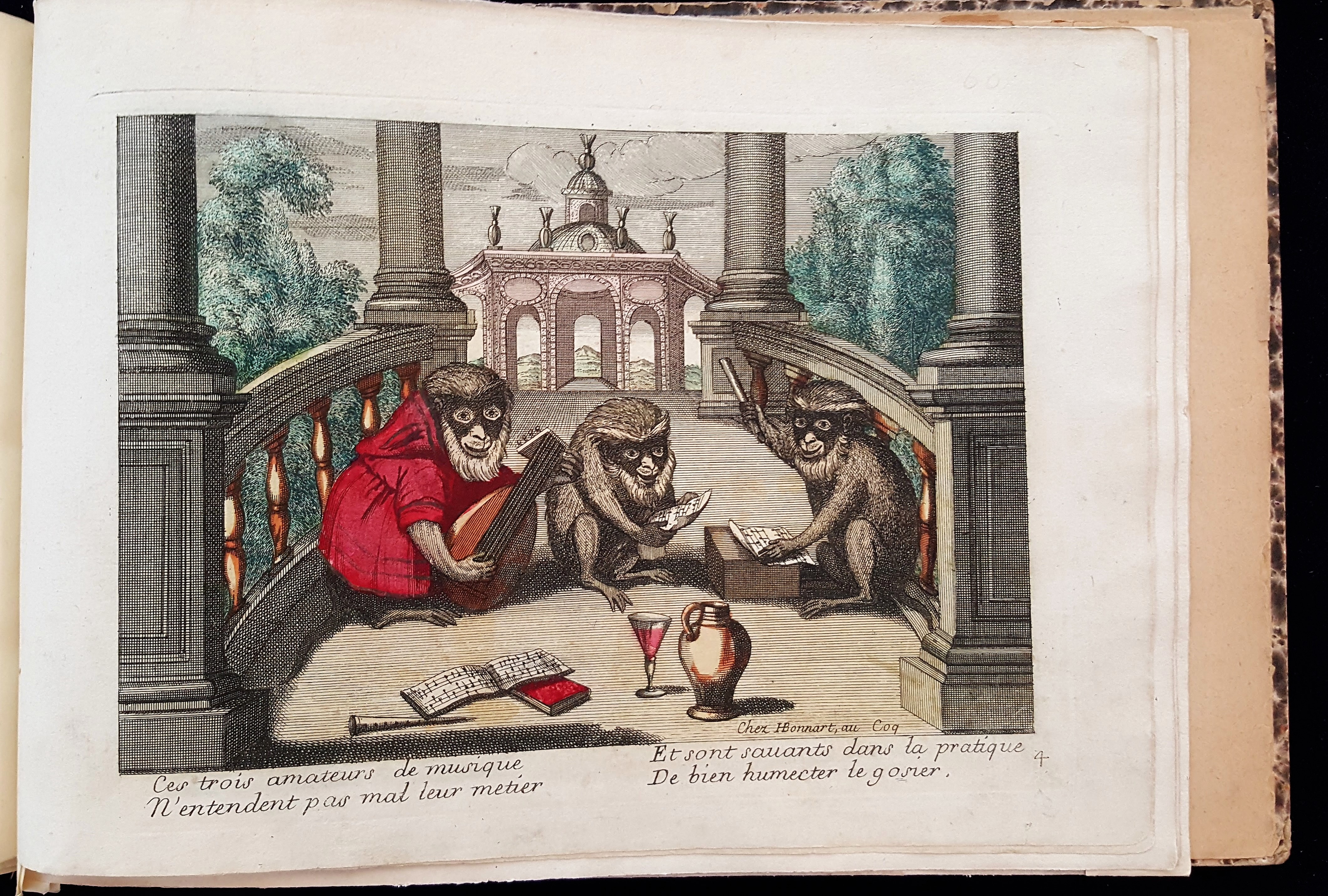Monkeys have been a symbol in world cultures for thousands of years, representing qualities ranging from fertility, to evil, lust and wisdom. The negative image that the monkey had in Western culture gradually changed in the 17th century when monkeys were used as symbols to satirize human behavior in Flemish genre painting. This visual art form became known as “singerie” (derived from the French word “monkey trick”), a genre that features fashionably attired monkeys humorously imitating human behavior.
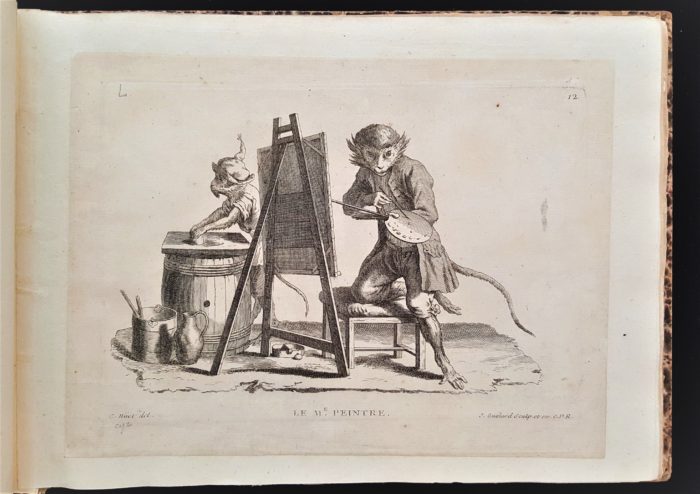
Titled,The Painter by Huet, a monkey depicted with an easel, brush and palette
Christophe Huet (1700-1759), a French artist of the Rococo period, illustrated this rare first edition in the Cooper Hewitt Library depicting examples of singerie. The theme became a popular diversion for the upper classes in 18th-century France. Artist Jean-Antoine Watteau depicted singeries in paintings; the motif also appeared in textiles, on porcelain, and in marquetry, the decorative wood inlay of furniture.
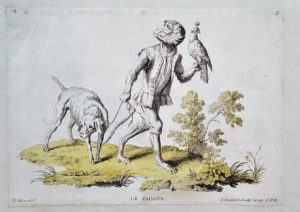
Singerie, Le Faucon. monkey dressed as a hunter with falcon and hunting dog.
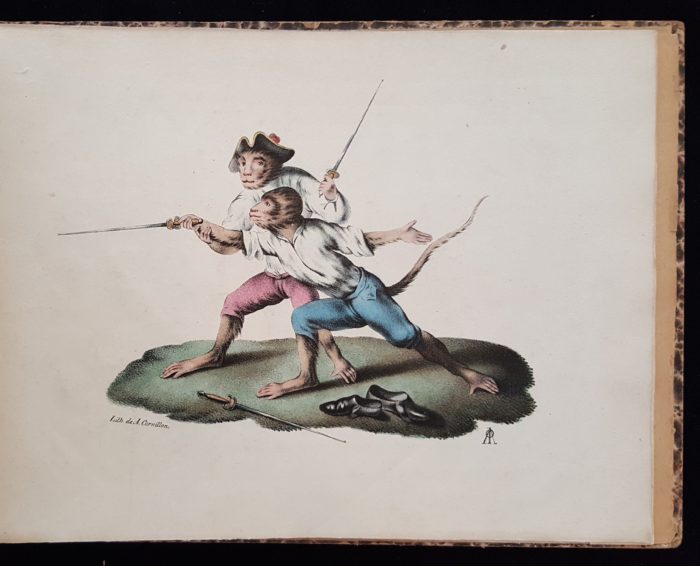
Singerie fencing master with student.
The monkeys’ antics and activities that mimicked French society were deemed very witty and amusing and for a time were considered the height of humor. Around 1737, Huet painted six panels depicting monkeys dressed as people and performing human activities, for a small boudoir called the Grande Singerie at the Chateau de Chantilly. The book in Cooper Hewitt’s library includes forty black and white and hand-colored images by Huet, illustrating monkeys hunting, playing music, dancing, bathing, and exercising.
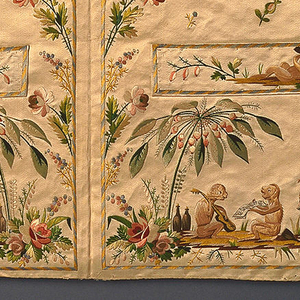
Waistcoat, uncut (detail), (France), 1780–95; silk satin embroidered with silk in satin, stem, and knot stitches; Bequest of Richard Cranch Greenleaf in memory of his mother, Adeline Emma Greenleaf, 1962-54-31
You can see an application of singerie on one of the elaborately embroidered waistcoats in the Cooper Hewitt exhibition, Nature by Design: Embroidered and Embellished, now on view. The playful design on this waistcoat features various exotic plants and flowers and monkeys drinking rum and playing music. Singerie was also part of the 18th-century vogue for imaginary representations of all things exotic and foreign.
Elizabeth Broman is a Reference Librarian at the Cooper Hewitt, Smithsonian Design Library.
